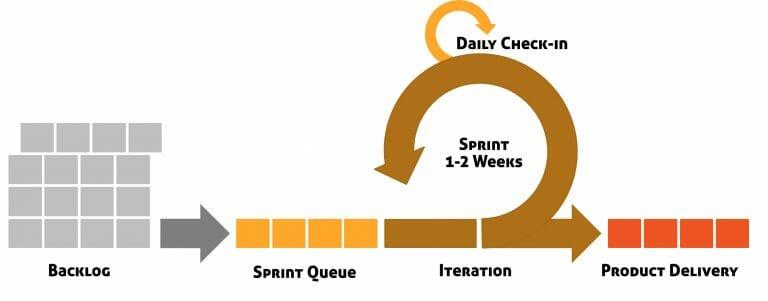7 Reasons to Use Agile Software Development

The Agile approach is fundamental for every software development project at Endertech. Here is an overview about Agile development, and why it is a recommended approach. Feel free to contribute to the discussion online using #whytoagile or #Y2agile.
What is Agile Software Development
The core principles of Agile software development include developing features by order of priority, time-boxing feature development into limited duration “sprints” of between 1 and 4 weeks, along with near daily scrums to stay apprised of developer progress and challenges. Client check-ins bookend each sprint contributing to the understanding of priorities and requirements which may change over time.
With Agile software development, project requirements and solutions evolve through team collaboration inclusive of developers and customers. Agile promotes a disciplined process of frequent inspection and adaptation resulting in a set of development best practices attuned to the project’s timeline, quality threshold, and customer needs. Endertech’s projects proceed forward in segmented sprints lasting typically around two-weeks each. During each sprint the team is planning and producing working code, and sometimes screen mock-ups.
Online purchases made from mobile devices continue to draw record-breaking revenue making sure none of the web platforms can ignore this device as a medium for consumption. Magento 2’s responsive frontend design gives that edge enhancing user experience and making it search engine friendly.
Why to Agile
1. Keeps the Project Straight and Narrow Path
Development journeys are redirected if veering off course. The Agile philosophy of “failing fast” helps prevent development steering onto the wrong path. Agile development involves regular communication and evolving documentation, in contrast to waterfall which requires complete documentation before the project begins, and thus enforces more rigidity to the established project plan.
2. Collaborative Decisioning
Group discussion in an expected/planned meeting setting, rather than a stressful emergency meeting, especially when dealing with crisis or concerns, allows for impassioned assessing and discussion leading to decisions that can be arrived at quicker.
3. Embraces Change
While a planning and research phase prior to initiating does yeoman’s work to imagine all stages of development, change is recognized as inevitable and is embraced. No one can fully define at a project’s start exactly how a system ultimately should work. Agile helps avoid the “analysis paralysis” pressure to get the system’s requirements locked in. With Agile the system is developed iteratively and course corrections are made along the way.

4. Final Product Gets it Right
Since the client business is an active stakeholder participant in the development process, they are able to identify the desired features that will add value to their business’ operations. The organic evolution of these requirements, rather than locking them in at the start of the project, can avoid the risk of developing functionality that has limited or no use in the business’ actual day to day operations.
5. Good for the Devs; Good for the Code; Good for the Client
Agile appeals to millennial developers who like its collaborative, fast-paced environment. Customer satisfaction studies find that Agile projects have lower counts of defects once deployed into production leading to client businesses who are more satisfied with the end result.
6. Technical Documentation Efficiency
The project management software used during the process documents the actual work (user stories, testing, etc.), i.e., what has been built via this incremental process vs. what theoretically would have been planned months ago if the holistic planning was set in stone at the beginning of the project. Traditional development has historically involved time consuming, laborious and mundane documentation that is often not really maintained or utilized once drafted. In fact, traditional development views the creation of said documentation as an important accomplishment, as opposed to the actual working code.
7. Maintenance is Easier
Collaboration by definition means knowledge of the various components of the finished product is not isolated to one person. As such, a single point of failure does not lead to dependency on the proverbial one person who knows that element well enough to make the needed changes. This is never the case with Agile since multiple developers are involved in coding every part of the system.
Why Agile with Endertech If you’re convinced or still question Agile is the way to go, contact us to discuss your software development project idea. Be prepared to explore your project’s scope and features so together we can adopt the Agile techniques that will work best for you.
David Alpern is the Digital Marketing Director for Endertech (https://endertech.com), a Los Angeles area website development agency based in Torrance, California. Contact us for your free consultation.
